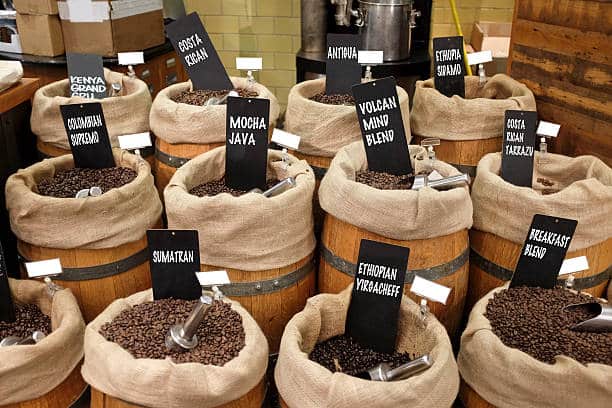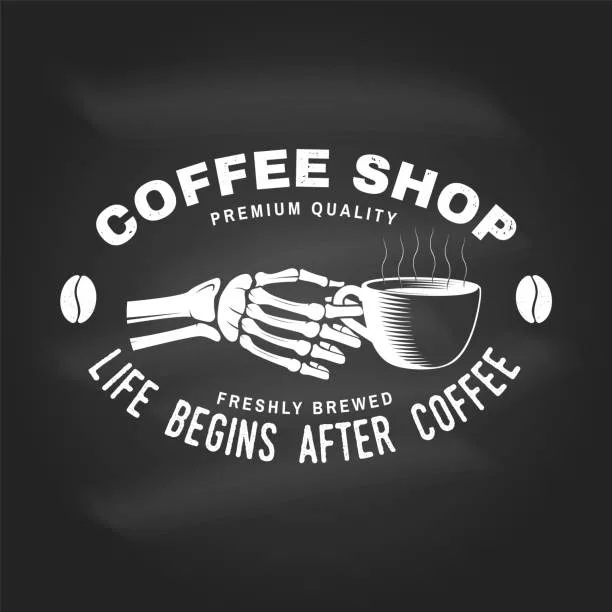Just as a great cup of coffee begins with carefully selected beans and precise brewing, every successful coffee shop starts with a meticulously crafted business plan. This plan is the blueprint for your entrepreneurial journey, the comprehensive guide that lays the groundwork for all the tantalizing cups of coffee and satisfied customers that your shop will serve in the future.
A coffee shop business plan is not just a document but a living roadmap that will direct your venture’s course. It starts with a thorough understanding of the coffee market, including an analysis of current trends, customer preferences, and competitive dynamics. This market knowledge is vital for identifying the unique opportunities your coffee shop can capitalize on.
Understanding the Market

To prosper in the vibrant and competitive realm of coffee shops, it’s absolutely crucial to kick-start your journey with a well-structured Coffee Shop Business Plan. The cornerstone of this plan is gaining a comprehensive understanding of the current coffee market and discerning how your prospective business will carve its unique niche within this landscape.
The Coffee Shop Business Plan acts as the compass that directs your business idea. The plan is not a mere formality but a dynamic tool that sets the stage for your strategic decisions and overall business direction. It begins with an in-depth market analysis, considering factors such as consumer preferences, market size, growth trends, and competition levels. This forms the basis of your understanding of the coffee shop industry, guiding you towards your strategic decisions.
A robust Coffee Shop Business Plan necessitates a careful examination of the competitive landscape. This involves identifying your potential competitors, understanding their strengths and weaknesses, and finding opportunities to differentiate your offering. By doing this, your plan will help you identify the unique aspects of your coffee shop that will set it apart in an already saturated market.
Simultaneously, your Coffee Shop Business Plan will guide your comprehension of consumer behavior. By understanding the current trends, you can tailor your products and services to meet the dynamic needs of the market. This may involve looking into trending coffee types, preferred flavors, or the increasing demand for sustainable and ethically sourced products.
Moreover, understanding your target demographic is a crucial component of your Coffee Shop Business Plan. This might include insights into your prospective customers’ age range, income levels, lifestyle preferences, and consumption patterns. These insights are pivotal in shaping your business offerings, pricing strategies, and marketing approaches.
Your Coffee Shop Business Plan should also consider macroeconomic factors and industry regulations. These include aspects such as import-export policies affecting coffee bean prices, health and safety regulations, employment laws, and environmental regulations. This broad view can help anticipate potential challenges and opportunities.
You’re setting a solid foundation by embedding a comprehensive understanding of the coffee market into your Coffee Shop Business Plan. This allows you to devise a business strategy that not only survives but thrives in the vibrant and caffeinated world of coffee shops, enabling you to brew success one cup at a time.
Defining Your Unique Selling Proposition (USP)

The world of coffee shops is as diverse as the many blends and roasts available to coffee lovers worldwide. In such a crowded marketplace, carving out a unique niche requires more than just excellent coffee. It demands a thoughtful and compelling Unique Selling Proposition (USP), a crucial element in your Coffee Shop Business Plan.
A well-crafted Coffee Shop Business Plan is incomplete without a clearly defined USP. This USP is the distinguishing factor, the secret ingredient that separates your coffee shop from the multitude of others. It’s the unique appeal your shop has, the reason customers would choose your business over countless others. This USP is what you leverage to make your coffee shop stand out in a bustling market.
In developing your Coffee Shop Business Plan, your USP should arise from an in-depth understanding of your target audience and market landscape. It could manifest in various forms, such as your signature coffee blends, the ambiance of your coffee shop, innovative serving styles, exceptional customer service, or a unique story or theme that resonates with your target customers.
When defining your USP in your Coffee Shop Business Plan, it’s crucial to consider the customer experience. In today’s market, customers seek more than just a caffeine fix – they seek a memorable experience. This might involve cultivating a warm and inviting environment, hosting community events, or creating a loyalty program with unique rewards.
Your USP could also focus on ethical sourcing and sustainability if you recognize that your target customers value these practices. This could involve promoting fair trade coffee, implementing eco-friendly practices, or supporting local producers. A business model built on social responsibility can often help to build strong customer relationships and loyalty.
Furthermore, your Coffee Shop Business Plan should leverage your USP in your marketing and branding strategies. It should feature prominently in your logo, tagline, signage, and all communications with customers. It’s not enough for you to know your USP – your customers should recognize and appreciate it too.
Ultimately, defining your USP in your Coffee Shop Business Plan is about finding that special element that sets your coffee shop apart. By identifying this and incorporating it into every aspect of your business – from your products to your branding – you can create a distinctive edge, positioning your coffee shop as a unique player in a market filled with sameness.
Designing a Memorable Brand

Creating a flavorful cup of coffee is undoubtedly an art, but building a successful coffee shop extends beyond brewing techniques. At the heart of your coffee shop’s identity is its brand—a tangible embodiment of your vision and values presented to customers consistently. Crafting a memorable and resonant brand is a pivotal component of your Coffee Shop Business Plan.
The brand of your coffee shop isn’t just a logo or a name. It’s a blend of the visual elements, customer experiences, core values, and the story your business tells—creating a distinct and lasting impression in the minds of your customers. Your Coffee Shop Business Plan should consider all these aspects, weaving them into a cohesive brand identity that stands out in the bustling coffee market.
In your Coffee Shop Business Plan, developing a memorable brand starts with defining your brand vision and values. Are you an artisanal, small-batch roaster dedicated to the craft of coffee making or a quick-service coffee hub catering to busy professionals? Do you focus on sustainability and ethical sourcing, or do you place emphasis on community involvement? Whatever your vision, it should shine through every aspect of your coffee shop, from your business operations to your marketing efforts.
Next, your Coffee Shop Business Plan should focus on translating this vision into a visual brand identity. This includes elements like your logo, color scheme, typography, and interior design. Your visual identity should be distinctive and resonate with your target audience. For instance, a coffee shop focusing on sustainable practices might choose earth tones and use repurposed materials in its decor.
Your brand’s voice is another essential aspect to consider in your Coffee Shop Business Plan. This is the tone and style of your communication across all platforms, whether it’s your website, social media, in-store signage, or customer service interactions. Your brand’s voice should be consistent, reflective of your brand’s personality, and appealing to your target demographic.
Customer experience is the next layer of your brand. Your Coffee Shop Business Plan should outline strategies to provide excellent service, create a welcoming atmosphere, and build strong customer relationships. This could include staff training initiatives, loyalty programs, and community events that enhance the overall customer experience.
Finally, storytelling is a powerful tool in brand-building. Every coffee shop has a story, whether it’s about the origin of your beans, the inspiration behind your shop, or your journey as a business owner. Sharing this story helps to build an emotional connection with customers and differentiates your brand in the market.
Designing a memorable brand within your Coffee Shop Business Plan is about more than aesthetics. It’s about crafting a holistic experience that encapsulates what your coffee shop stands for, fosters customer loyalty, and sets your business apart in a saturated market. With a well-crafted brand, your coffee shop becomes more than a place to get a coffee—it becomes a destination and a community.
Detailing the Products and Services

In the vibrant world of coffee shops, where every aroma has a story to tell, your offerings are much more than just items on a menu. They are the essence of the experience you provide to your customers, and play a crucial role in distinguishing your brand. Detailing the range of products and services you plan to offer is an indispensable component of your Coffee Shop Business Plan and instrumental in charting your coffee shop’s operational strategy.
Your Coffee Shop Business Plan should include a comprehensive list of your proposed product offerings. This might range from traditional coffee beverages like espressos, lattes, and cappuccinos to more innovative concoctions that reflect emerging trends or your unique brand positioning. Specialty teas, hot chocolate, and other non-coffee beverages might also be part of your product portfolio to cater to a wider range of customer preferences.
However, a thriving coffee shop isn’t just about the drinks. Your Coffee Shop Business Plan should also detail the food items you plan to offer. This could include a variety of pastries, sandwiches, salads, or even heartier fare, depending on your target audience and the concept of your coffee shop. Each food item should complement your beverage offerings, enhancing the overall customer experience.
Further, your Coffee Shop Business Plan should go beyond the tangible products and delve into the services you plan to provide. This could include elements like in-store Wi-Fi, a loyalty rewards program, catering services, or special events like live music nights or coffee tastings. These additional services can serve as unique selling points, providing added value to your customers and promoting customer loyalty.
It’s essential that your Coffee Shop Business Plan also considers the sourcing of your products. Will you be roasting your own coffee or sourcing from local roasters? Will your pastries be baked in-house or supplied by local bakeries? These decisions have significant implications for your operating model, cost structure, and brand positioning.
Additionally, your Coffee Shop Business Plan should consider the pricing strategy for your products and services. This involves balancing the need to cover costs and generate profit while remaining attractive to customers. Your pricing should reflect the value of your offerings, align with your brand positioning, and be competitive within your local market.
In essence, detailing the products and services in your Coffee Shop Business Plan is about mapping out your operational strategy and providing a comprehensive overview of what customers can expect when they step through your doors. It’s about curating a menu and services that not only satisfy the taste buds but also cater to the preferences and lifestyles of your target customers, setting your coffee shop apart in the highly competitive coffee industry.
Planning the Location and Layout

The rich, invigorating aroma of fresh coffee may be a key draw, but in the realm of coffee shops, the location and layout of your establishment are just as critical, if not more so. These are foundational elements that can determine the success of your coffee venture, influencing everything from foot traffic and visibility to customer experience and brand perception. It is therefore essential to detail the planning of the location and layout within your Coffee Shop Business Plan.
In your Coffee Shop Business Plan, selecting the right location involves careful consideration of several factors. These include the demographic profile of the area, proximity to key traffic sources such as office buildings or universities, accessibility, and visibility. Analyzing local competition in the area is also crucial, as is understanding the lifestyle and consumption habits of the local population. This decision also involves practical aspects such as lease terms, rental costs, zoning regulations, and availability of parking.
Once the perfect location is chosen, your Coffee Shop Business Plan must then focus on the layout of your coffee shop. The layout should be designed to optimize operational efficiency, promote a seamless flow of customers and staff, and enhance the customer experience. This involves planning the placement of key areas such as the coffee counter, seating area, storage, and restroom facilities.
In your Coffee Shop Business Plan, it’s important to consider how the layout contributes to the overall ambience and brand image. For instance, open, communal seating arrangements may encourage socialization and cater to larger groups, while smaller, more private settings may appeal to individuals seeking a quiet place to work or study. The choice of decor, lighting, and furniture should also align with your brand identity, creating a cohesive, inviting space that reflects your coffee shop’s unique personality.
Incorporating sustainable practices into your layout planning can also be a distinguishing factor. This can range from energy-efficient lighting and appliances to eco-friendly materials and waste management systems. This not only reduces your environmental footprint but may also resonate with increasingly eco-conscious customers.
Finally, your Coffee Shop Business Plan should outline plans for future growth or changes. As your business evolves, your layout may need to be adjusted to accommodate more customers, add new services, or improve operational flow. Having a flexible layout plan can help ensure your business can adapt to changes and continue to grow successfully.
In summary, the aroma of freshly brewed coffee may lure customers in, but a strategic location and well-designed layout will keep them coming back. By meticulously planning these aspects in your Coffee Shop Business Plan, you’re laying the foundation for a thriving coffee shop that satisfies not just the palate but also the overall experience of your patrons.
Financial Forecasting and Management

Running a successful coffee shop entails more than the delightful taste of your brew and the welcoming ambiance. In the background, a meticulously crafted financial strategy steers your venture towards sustainability and growth. Therefore, in your Coffee Shop Business Plan, it’s crucial to include comprehensive financial forecasting and efficient management practices to ensure the economic health of your coffee shop.
Financial forecasting, as an integral part of your Coffee Shop Business Plan, involves predicting future revenue, costs, and profitability based on a variety of factors. These include expected sales volume, price points, cost of goods sold (such as coffee beans and bakery items), overhead costs (rent, utilities, salaries, etc.), and potential fluctuations in these factors.
Your Coffee Shop Business Plan should outline the projected income and expenses over a specified period, typically three to five years. It should include a sales forecast, which estimates the number of customers and average spending, and an expenses forecast, which estimates both variable and fixed costs. Your forecast should also factor in capital expenditures like equipment purchases and renovations.
The financial forecast in your Coffee Shop Business Plan also extends to profitability projections. This involves calculating metrics like gross margin, operating margin, and net profit margin. Understanding these ratios can help determine the viability of your business model and inform decisions such as pricing strategies, cost control measures, and investment needs.
Prudent financial management, meanwhile, ensures the ongoing financial stability and growth of your coffee shop. In your Coffee Shop Business Plan, this involves strategies for managing cash flow, maintaining sufficient capital reserves, optimizing cost efficiency, and investing in growth opportunities.
Cash flow management is critical for the day-to-day operations of your coffee shop, ensuring that you have enough cash to cover expenses and manage any unexpected costs. Your Coffee Shop Business Plan should include strategies for managing receivables, payables, and inventory to optimize cash flow.
Your Coffee Shop Business Plan should also detail strategies for maintaining capital reserves to safeguard against unforeseen circumstances or to seize growth opportunities. This might involve setting aside a certain percentage of profits or securing lines of credit.
Cost efficiency strategies, such as reducing waste, optimizing labor costs, and negotiating with suppliers, can also be outlined in your Coffee Shop Business Plan. These can help to improve your bottom line and increase your financial resilience.
In conclusion, the success of your coffee shop is indeed measured in the cups sold, but a sustainable, profitable business relies on accurate financial forecasting and judicious financial management. By weaving these elements into your Coffee Shop Business Plan, you’re not only planning for a thriving coffee shop but also building a robust financial framework to support your venture’s success.
Marketing and Promotion Strategy

The charming aroma of freshly brewed coffee and the inviting ambiance of your coffee shop is just the beginning; a meticulously crafted marketing and promotion strategy is indispensable to truly make a buzz that’s louder than your coffee grinder. This vital element, carefully detailed in your Coffee Shop Business Plan, serves as your megaphone, broadcasting your unique offerings to the world and drawing customers to your doorstep.
Marketing and promotion are not one-size-fits-all in the coffee business. In your Coffee Shop Business Plan, your strategy should be tailored to reflect your brand, resonate with your target audience, and distinguish your coffee shop in the competitive marketplace.
Firstly, your Coffee Shop Business Plan should outline your target market. Understanding who your customers are, their preferences, lifestyles, and coffee habits is crucial for crafting effective marketing and promotional messages. This could range from busy professionals needing a quick coffee fix, students looking for a study spot, or coffee connoisseurs seeking specialty brews.
Next, your Coffee Shop Business Plan should define your key marketing messages. These are the messages that convey your unique selling proposition, your brand values, and the unique experience customers can expect at your coffee shop. This could involve highlighting your handcrafted coffee blends, your cozy atmosphere, your exceptional customer service, or your commitment to sustainability.
With your target market and key messages defined, your Coffee Shop Business Plan should then outline the marketing channels you plan to leverage. These could include traditional methods such as print advertising, signage, and local events, as well as digital channels such as social media, email marketing, and search engine optimization. The chosen channels should align with where your target customers are most likely to engage.
Social media, for instance, offers a powerful platform for engaging with customers, showcasing your offerings, and building your brand identity. You can share visually appealing photos of your coffee and food, post about upcoming events, and interact with your followers. Similarly, email marketing can help to maintain a connection with your customers, share special offers, and drive repeat business.
Finally, your Coffee Shop Business Plan should detail your promotional strategy. This might include grand opening events, loyalty programs, discount offers, partnerships with local businesses, or sponsorship of local events. Promotions can incentivize trials, drive foot traffic, and encourage repeat visits.
In essence, creating a buzz for your coffee shop is about more than making noise—it’s about making the right kind of noise in the right places and to the right people. By outlining a well-thought-out marketing and promotion strategy in your Coffee Shop Business Plan, you’re setting the stage for attracting customers, building a loyal following, and establishing your coffee shop as a beloved fixture in the community.
Sourcing High-Quality Beans and Equipment
related article – what are the top 10 coffee beans & why?
Coffee is one of the most popular beverages in the world, enjoyed by millions of people every day. With so many different types of coffee available, it can be difficult to know which ones are the best and what sets them apart.
Read Our Coffee Lovers Guide To Find Your Perfect Cup Here.

Every successful coffee shop prides itself on the quality of its brew, a direct result of sourcing high-quality beans and utilizing efficient, top-notch equipment. These core elements contribute to the perfect cup of coffee and the overall customer experience, solidifying your reputation as a premium coffee destination. Therefore, detailing your strategy for sourcing high-quality beans and equipment is an integral component of your Coffee Shop Business Plan.
In your Coffee Shop Business Plan, sourcing high-quality beans requires careful consideration. Your choice of beans will greatly influence the taste of your coffee, impacting customer satisfaction and your shop’s reputation. You’ll need to decide whether to source single-origin beans, which come from a specific geographical location and offer a unique flavor profile, or blends, which combine beans from different locations for a balanced flavor.
Consideration should also be given to how the beans are grown and processed. For example, will you prioritize beans from fair-trade sources or those grown organically? Your choices here can align with your shop’s values and serve as key selling points. Working with reputable coffee suppliers or direct trade relationships can also ensure consistency in the quality of your beans.
While less visible than the beans, the equipment in your coffee shop plays a critical role in delivering the perfect cup of coffee. Your Coffee Shop Business Plan should detail the type of coffee machines, grinders, and other necessary equipment you plan to use. This could range from traditional espresso machines and automatic drip coffee makers to more specialized equipment like cold brew systems or manual pour-over setups.
When choosing your equipment, considerations should include the volume of coffee you plan to serve, the types of coffee beverages on your menu, the skill level of your staff, and your budget. It’s also essential to consider the equipment’s maintenance, lifespan, and energy efficiency.
Additionally, your Coffee Shop Business Plan should factor in a strategy for regular maintenance and possible equipment upgrades. This ensures your equipment stays in top working condition and can accommodate future growth or changes in your menu.
In conclusion, the heart of your coffee shop indeed lies in the quality of your beans and the efficiency of your equipment. By outlining your strategies for sourcing high-quality beans and equipment in your Coffee Shop Business Plan, you’re setting the stage for delivering consistently excellent coffee, satisfying customers, and distinguishing your coffee shop in the increasingly competitive coffee industry.
Hiring and Training Staff

The rich, velvety taste of your coffee and the unique ambiance of your coffee shop may draw customers in, but it’s the friendly smiles and skilled service of your baristas that truly enhance the customer experience. Your staff are the face of your business, often the first and last interaction your customers have with your coffee shop. Therefore, hiring and training the right team is crucial in your Coffee Shop Business Plan, directly impacting your business’s reputation, customer satisfaction, and overall success.
Your Coffee Shop Business Plan should detail the hiring process for your coffee shop. This involves defining the roles needed, such as baristas, managers, and kitchen staff, and outlining the skills, qualifications, and qualities you’re seeking in your team. These include previous experience, customer service skills, a passion for coffee, and the ability to work in a fast-paced environment. Your hiring strategy should also include where and how you plan to recruit candidates, such as through job boards, social media, or local employment agencies.
Additionally, your Coffee Shop Business Plan should describe your approach to staff training. This not only ensures that your team can produce consistently great coffee, but it also equips them with the knowledge and skills to provide exceptional customer service. Training can cover areas such as understanding different coffee varieties and brewing methods, operating coffee equipment, managing customer transactions, and handling customer complaints. Incorporating ongoing training and development opportunities in your plan helps keep your team’s skills fresh and motivation high.
Your approach to staff management is equally important in your Coffee Shop Business Plan. This includes how you plan to foster a positive workplace culture, manage scheduling and staffing levels, handle performance evaluations, and provide feedback and recognition. A happy, motivated team can lead to better customer service and higher employee retention, contributing to the overall success of your coffee shop.
Moreover, consider how you will comply with labor laws, health and safety regulations, and any other relevant employment legislation. This could involve plans for appropriate worker’s compensation insurance, health and safety training, and maintaining accurate employee records.
In conclusion, your baristas indeed serve as the face of your coffee shop. By detailing your strategy for hiring and training a skilled and dedicated team in your Coffee Shop Business Plan, you’re enhancing the customer experience and building a strong foundation for your coffee shop’s reputation and success.
Sustainability and Social Responsibility

In today’s increasingly environmentally conscious world, businesses are expected to step up and contribute to the preservation of our planet. Coffee shops are no exception. Dedication to sustainable practices and social responsibility can distinguish your business and appeal to a wider, more conscientious customer base. Therefore, integrating sustainability practices and social responsibility should be a central theme in your Coffee Shop Business Plan.
Incorporating sustainability in your Coffee Shop Business Plan can cover a wide range of practices. You could focus on sourcing and selling coffee grown and processed in an environmentally friendly and socially responsible way. This can involve procuring fair-trade or organic coffee, ensuring farmers receive fair compensation, and environmentally sound farming practices are used.
In addition, your Coffee Shop Business Plan could detail how you will minimize waste, such as by using compostable or reusable cups, reducing packaging, and composting coffee grounds. It might also outline how you plan to conserve energy and water in your operations, such as through energy-efficient appliances and fixtures.
Beyond environmental considerations, your Coffee Shop Business Plan should detail how your business will contribute positively to society. This could involve initiatives such as community involvement, charitable giving, or creating inclusive employment opportunities. For instance, you could partner with local organizations for community events, donate a portion of your profits to a worthy cause, or employ individuals who face barriers to employment.
Incorporating these sustainable practices and social responsibility initiatives into your Coffee Shop Business Plan not only contributes to a better world but can also bring tangible benefits to your business. Customers increasingly prefer businesses that align with their values, and showcasing your commitment to sustainability and social responsibility can strengthen your brand image, attract a wider customer base, and foster customer loyalty.
In conclusion, integrating sustainability practices and social responsibility into your Coffee Shop Business Plan isn’t just a nice-to-have – it’s a strategic move that can set you apart in the competitive coffee industry. In an environmentally conscious world, your commitment to making a positive impact can be your unique selling proposition, drawing customers to your doorstep and nurturing a brand that they are proud to support.
Implementation Timeline and Milestones

Embarking on your coffee shop venture is an exciting journey involving countless decisions, careful planning, and diligent execution. Like any journey, it’s crucial to know your path and key milestones along the way. Thus, setting a clear implementation timeline within your Coffee Shop Business Plan can provide you with a detailed roadmap, guiding you step by step towards your ultimate destination – your coffee shop’s successful launch and operation.
An implementation timeline in your Coffee Shop Business Plan organizes the tasks involved in starting your coffee shop into a logical sequence, providing a clear view of what needs to be done, when, and in what order. This ensures a smooth progression of activities, aids in resource planning, and keeps your venture on track.
Your Coffee Shop Business Plan should begin with the preparatory stages. These include researching and understanding the coffee market, defining your unique selling proposition, designing your brand, and outlining your products and services. Each of these stages should have specific goals and timeframes attached to them.
Next, your Coffee Shop Business Plan should lay out the timeline for your operational setup. This includes securing a suitable location, designing the shop layout, sourcing high-quality beans and equipment, and setting up the necessary systems and processes. This phase should also include the hiring and training of your staff.
Following this, your Coffee Shop Business Plan should detail the milestones leading up to your grand opening. This includes finalizing your menu, conducting a soft opening, finalizing your marketing and promotion strategies, and launching your grand opening event. Each milestone should have a specific target date, allowing you to plan and coordinate all the necessary activities effectively.
Lastly, your Coffee Shop Business Plan should outline your timeline for ongoing management and growth. This might include regular reviews of your business performance, plans for menu updates, staff training, and development initiatives, and any planned expansion or diversification.
In conclusion, setting a clear implementation timeline with milestones in your Coffee Shop Business Plan not only guides you toward your destination but also ensures a systematic and well-orchestrated progression of your coffee shop venture. It acts as your roadmap, illuminating the path ahead and steering you confidently towards the successful launch and thriving operation of your coffee shop.
Coffee Shop Business Plan Conclusion
Creating a compelling and comprehensive Coffee Shop Business Plan is an essential stepping stone towards turning your dream of owning a coffee shop into a reality. It serves as the blueprint for your venture, outlining each aspect from understanding the market, carving out a unique selling proposition, designing your brand, detailing your products and services, selecting a prime location, to defining the shop’s layout. Further, your plan addresses the vital aspects of financial forecasting, marketing and promotion, sourcing quality beans and equipment, assembling an exceptional team, embedding sustainability and social responsibility, and setting a clear implementation timeline.
This comprehensive business plan provides a solid foundation for your coffee shop, arming you with a strategic vision and operational specifics. It ensures you are prepared for the demands of the competitive coffee industry and set for success. Your plan becomes your North Star, guiding your decisions, driving your progress, and providing a safety net when challenges arise.
As we conclude, remember that your coffee shop is more than just a business; it’s a hub for the community, a place for people to connect, unwind, and create memories, all over a delightful cup of coffee. In the end, the success of your coffee shop comes down to a blend of strategic planning, diligent execution, exceptional coffee, and a genuine commitment to your customers and community.
So, go ahead and embark on this exciting journey with confidence. With a robust Coffee Shop Business Plan in your arsenal, you are well-prepared to brew success, one cup at a time. Here’s to your future coffee shop, filled with the aroma of success and the buzz of satisfied customers.
Coffee Shop Business Plan Appendix: Useful Tools and Resources
Certainly, embarking on the journey of crafting a comprehensive Coffee Shop Business Plan can feel like an overwhelming endeavor. But fear not, there’s a wealth of resources available to support you along the way. Below are some invaluable tools and resources that can help you brew your dream coffee shop into reality:
- Business Plan Software: Tools like LivePlan, Bizplan, and Upmetrics provide templates, step-by-step guidance, and financial forecasting tools to help you craft a solid business plan. They offer industry-specific templates, which could be a great starting point for your coffee shop business plan.
- Market Research Tools: Understanding your target market and competition is crucial. Tools like IBISWorld and Statista provide industry reports, trends, and statistics. Google Trends and Google Keyword Planner can also give insight into the popularity of certain search terms and geographic interest over time.
- Financial Tools: For financial planning and projections, software like QuickBooks, Xero, or Wave can be useful. They can help manage your accounting, payroll, and taxes, and have features to assist in forecasting and budget planning.
- Design Software: Tools like Canva, Adobe Creative Cloud, or Sketch can assist in designing your logo, branding materials, and layout of your coffee shop.
- Project Management Tools: Software like Trello, Asana, or Monday.com can help manage your tasks, track your progress, and ensure you meet your milestones as you set up your coffee shop.
- HR Tools: Software like Workable or BambooHR can assist in recruiting, hiring, and training your coffee shop staff.
- Sustainability Resources: Websites like the Specialty Coffee Association or the Sustainable Coffee Challenge offer resources on sustainable practices in the coffee industry.
- Books and Online Courses: There are countless books and online courses that offer insights into starting a coffee shop. For example, “The Daily Grind: How to Open & Run a Coffee Shop That Makes Money” by Andrew Bowen and Claire Bowen or the Udemy course “Coffee Shop Business Plan: How to Open a Coffee Shop and Ensure it’s Successful, Popular, and Profitable” by Coffeepreneur Academy.
- Local Resources: Don’t overlook local resources like your Chamber of Commerce, Small Business Development Centers (SBDC), or SCORE, which provide free business counseling and resources.
Remember, these tools are here to help you navigate the process of creating your Coffee Shop Business Plan. They can provide guidance, streamline tasks, and offer valuable insights, but your coffee shop’s unique vision and flavor ultimately come from you. Happy planning!
In a family of coffee addicts, Mark started to appreciate the drink fairly late – around 35 years old.
His love for java began when he wrote articles on it and bought his first machine after which everything else just fell into place; there are now five machines in our home!
We start every day with an early morning cuppa coffee because what could better help set your mind right than some freshly brewed hot Coffee?
When Marks not writing or thinking about coffee, he can be found sipping on a cup of black gold at one of his favorite local joints.




